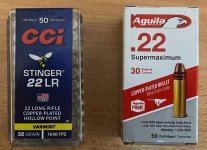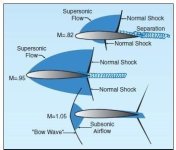@FrankenMauser, what are your thoughts on that Hammerli? I've been looking at it as a cheaper way to get into a .17 HM2 without going Volquartsen. I could just go with a Savage for around $400, but I've been eyeballing that Volquartsen Summit for awhile.
I like it and plan to keep it. I shot it in the last NRL22 match, even though it is currently shooting about 2-3 MoA. (I placed poorly, but not last.

)
I will also get a .22 WMR barrel for it when they are available. (Please don't be vaporware...)
However, the long integrated rail on the receiver won't let me mount shorter scopes without using excessively tall rings, like the Athlon Neos that I had set aside for it.
The stock adjuster seems flimsy and questionable. But the material is far better than the tupperware Springfield 2020R stocks. So, maybe it'll hold up. Otherwise, the stock seems fine.
The action was very rough out of the box (and is still moderately rough). Most of the moving parts are MIM and completely unpolished. With some polishing and wear, the bolt and cycling will smooth out a bit. But it will require attention to be satisfactory.
The biggest problem, out of the box, is the trigger. It is heavy, creepy, gritty, and terrible. Because, again, it is nearly all MIM parts that are completely raw. No polishing or machining. Just raw MIM.
Fixing it is not really viable (mine, anyway). The mechanism is overly complicated (~29 parts, not including mag catch/release and spring; and that's with no disconnector in the system), a pain to disassemble, very difficult to reassemble, and the interfacing surfaces on my sear and hammer were jagged and rounded. To machine or stone the faces back into proper shape would remove too much material.
So, I put a Ruger BX trigger in mine and that'll be good enough for now.
The M-lok rai in the fore-end has non-standard spacing because of the screw in the center. So you cannot use a one-piece rail without modification. It must be short sections or a modified rail. Annoying, but not the end of the world (or any issue if you're not mounting rails).
I do like it, plan to keep it, and want to expand its capabilities.
The weight is good, ergos are decent, threaded barrel is nice, and it is fun to run. My brother and nephew want to buy them now. But they do know to expect a rough action and terrible trigger.
Hopefully I didn't harp on too many negatives. I sometimes have a hard time articulating the positives - or things that didn't catch my attention because they're just fine.


